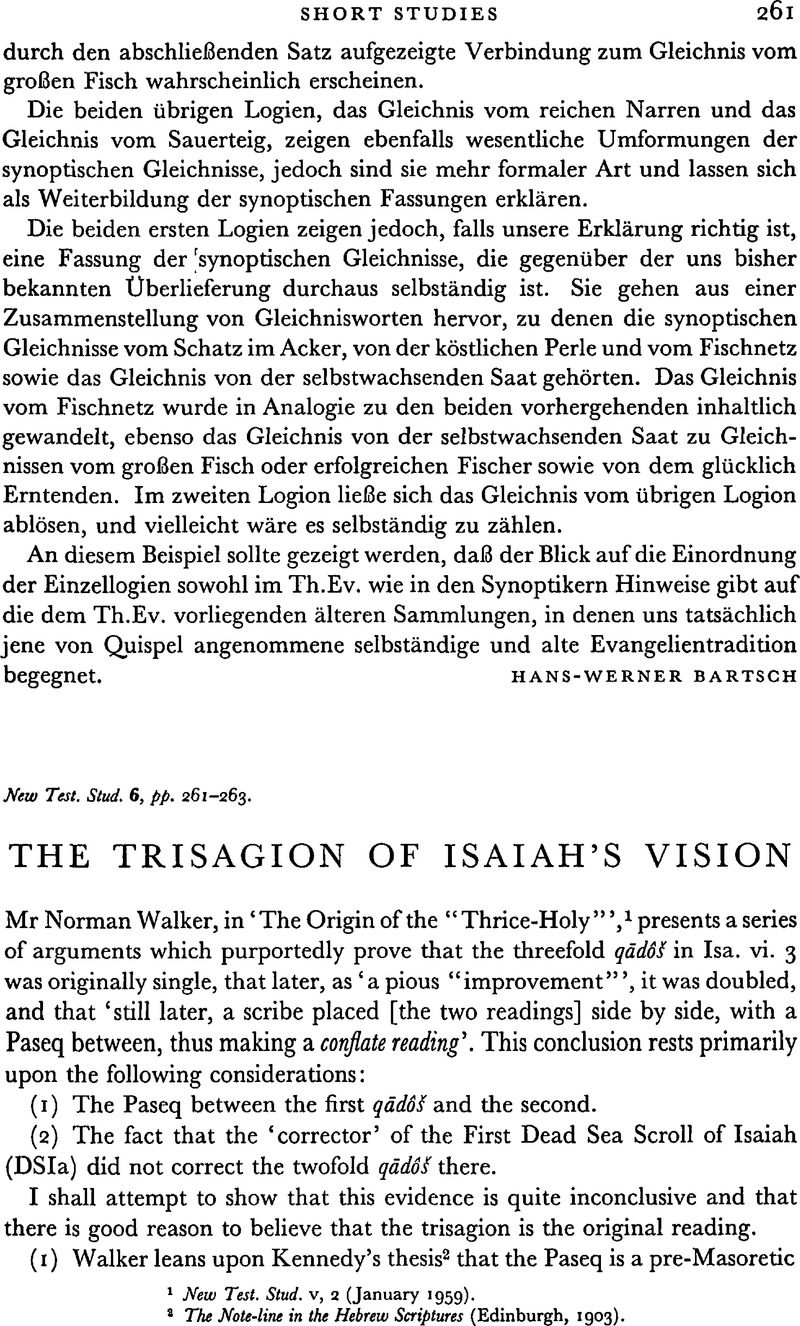No CrossRef data available.
Published online by Cambridge University Press: 05 February 2009

1 New Test. Stud. v, 2 (January 1959).Google Scholar
2 The Note-line in the Hebrew Scriptures(Edinburgh, 1903).Google Scholar
1 This is not the place for a detailed critique of Kennedy's work. Cf. the reviews cited in Gesenius-Kautzsch-Cowley (Oxford, 1910), p. 59, n. 2, esp. KönigGoogle Scholar; also the comment at end of note on p. 60. See also Pinsker, S., Mabo ‘el hannikkud ha-aššuri ’o hababli (Wien, 1863) and Wickes, Accents of the Twenty-one Books(Oxford, 1887), who conclude that the Paseq was introduced after the other accent signs. S. A. Cook (J.Q.R. O.S. XVI, 415) concludes that Kennedy ‘has failed to prove his theory’.Google Scholar
2 ‘The Pasek in the Scriptures: A Suggestion’, J.Q.R. N.S. xx, 3 (January 1930), 249 ff. He believes the Paseq is a variant on the dot that is used to separate words in the texts of the Moabite Stone, the Siloam Inscription, and the Samaritan Pentateuch; or the zain (often a vertical line) that is used in some Samaritan and Sidonian inscriptions to separate words and sentences from one another. He suggests that such vertical lines followed each word in ancient Hebrew, and that with the invention of spacing most were dropped, while for a variety of reasons—and sometimes perhaps for no reason—some were kept. However, the fact that Paseq occurs only in post-Masoretic MSS. and has not been retained in the Torah scrolls (as certain other ancient devices have) gives us pause.Google Scholar
3 Sukenik, Yadin and others hold that this scroll was written phonetically (using matres lectionis) for aid in oral reading. But this fails to account for the vast—and imaginative—variations in spelling.
4 J. Reider (J.Q.R. N.S. XLI, 59) says that there is a ![]() before
before ![]() , ‘faded, but can be seen by the discerning eye’.
, ‘faded, but can be seen by the discerning eye’.